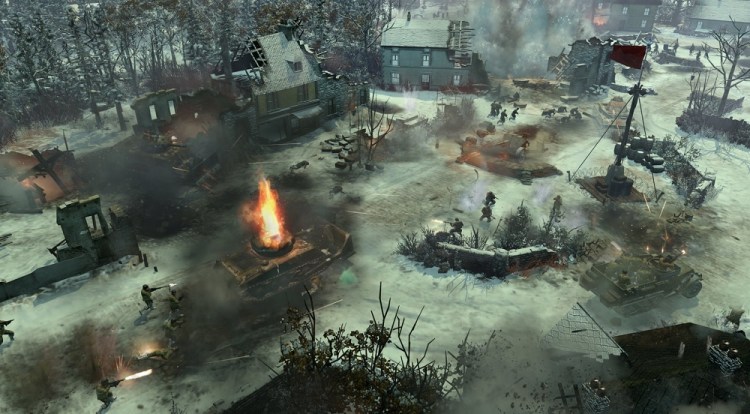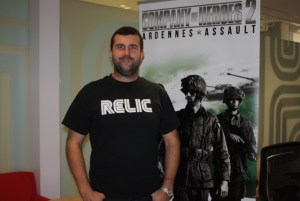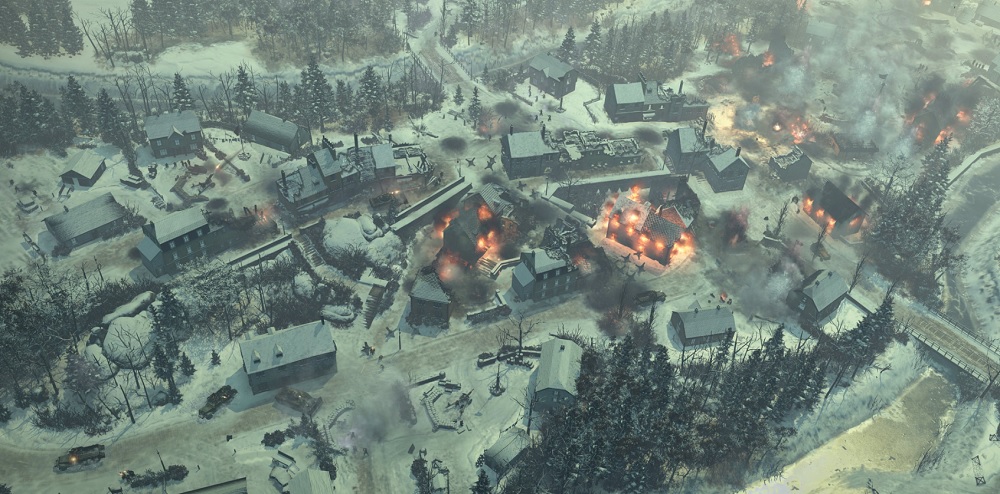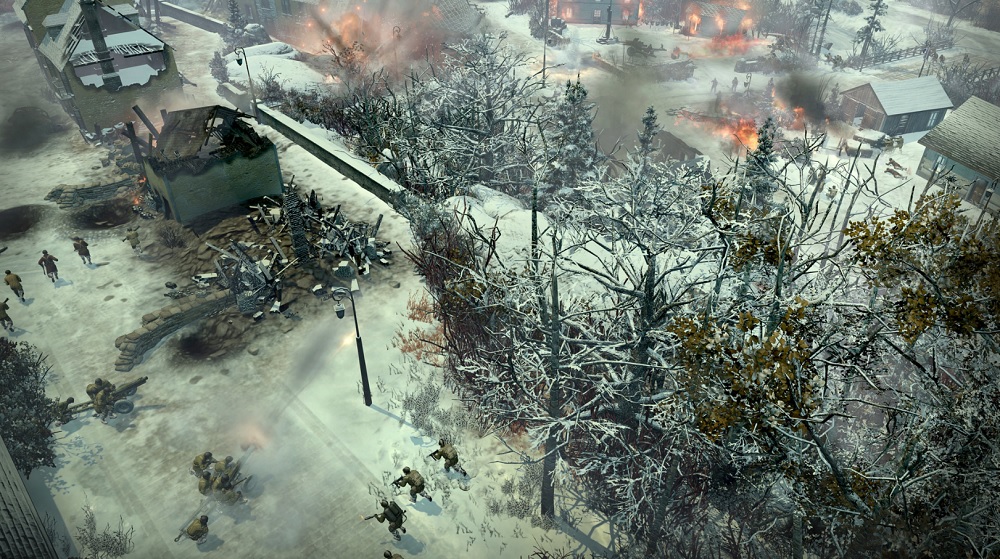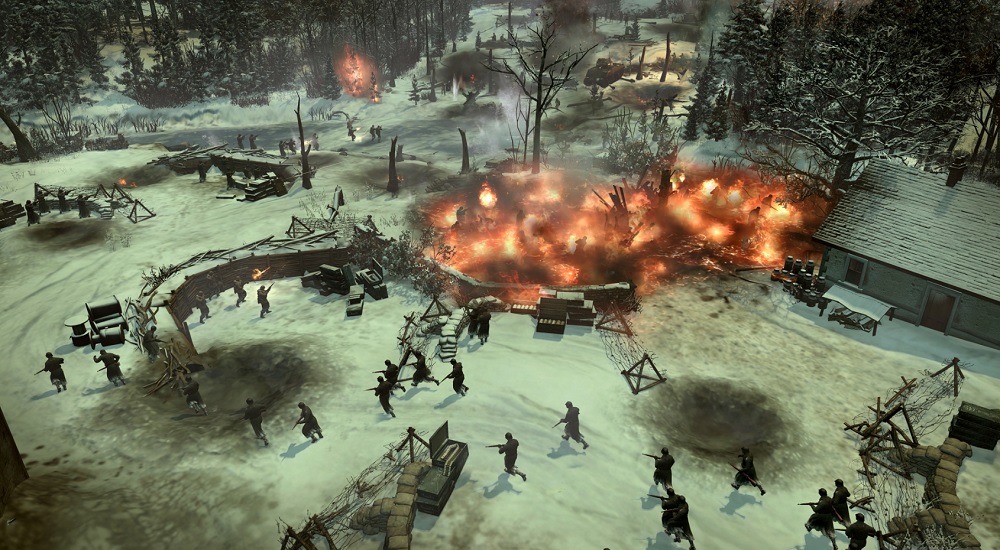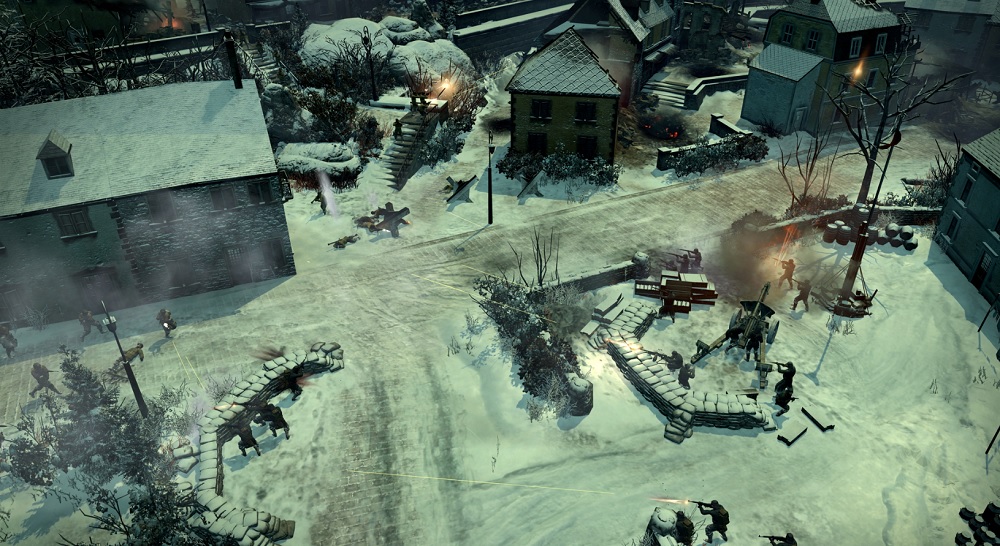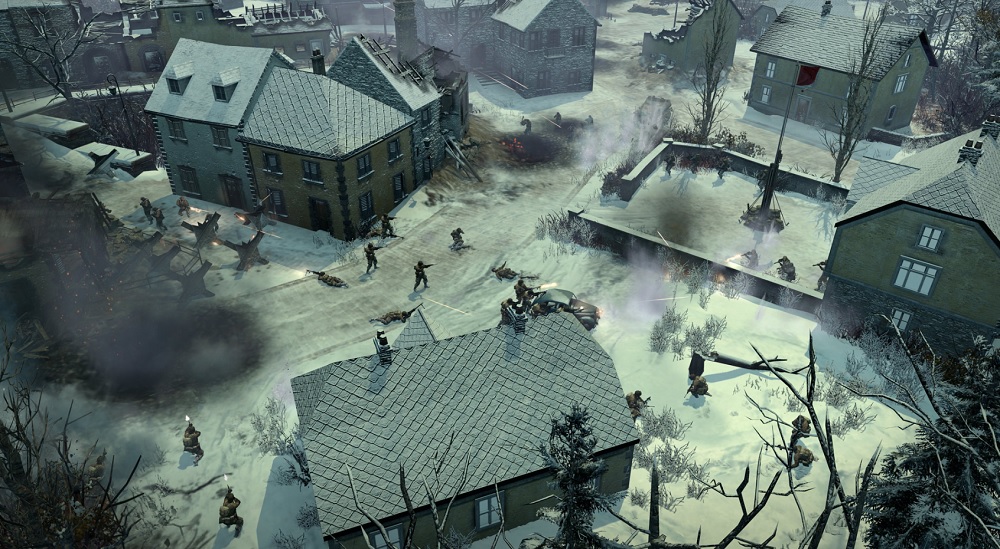Winston Churchill described the harrowing Battle of the Bulge as the “greatest American battle” of the Second World War. Adolph Hitler’s armies launched a surprise attack in the Ardennes in December 1944, creating a giant bulge in the American lines. In the middle of winter, the Americans had to close the gap and retake the forest.
Now you can relive that battle with Company of Heroes 2: Ardennes Assault. I played a full round of the game, which Sega releases for PC on Nov. 18, in a preview that game director Quinn Duffy of Relic Entertainment narrated for me. Ardennes Assault is rare World War II real-time strategy game, and it’s the latest extension of Relic’s Company of Heroes 2, which debuted last year with a focus on the Russian front. Relic followed that up with Western Front armies for multiplayer play this summer. I have long been a fan of this series as a perfect mix of state-of-the-art graphics, fast-action real-time combat, and a nice historical fix.
Now it is releasing what is effectively a whole new game, a standalone expansion based on the Company of Heroes 2 game engine. As with the earlier games, you play from a top-down view of the battle, with squads of soldiers at your command. You must capture strategic points on each map in order to get more resources. You can use those resources to build out your base and create more tanks, half-tracks, infantry squads, or special weapons crews. As the battle spreads across the map, you wind up having a lot of juggling. Add to that the difficult of “fog of war,” as you can only see the sections of the map where your troops have a line of sight. That makes for a lot of ambushes and rude surprises.
The game has 11 new missions and seven engagements set in Belgian towns such as Bastogne or Houffalize. Altogether, it has 18 maps with lots of replayability and bonus goals.
The action starts with the initial German push into the Ardennes. You play the American side, and must push the veteran German troops back one map at a time. The beautifully rendered towns and snow-covered trees offer lots of cover for infantry, and they make it hard for the tanks to maneuver without being ambushed by anti-tank infantry.
Your troop companies are persistent. They can take damage, and they can gain veterancy. You can preserve veteran units, or dilute them with replacements. In between missions, you can spend the points you earn on more combat resources, such as grenade-equipped squads, air power, or off-map artillery strikes. When your infantry squads are hit with German armor, you have to use your artillery strikes with precise targeting and perfect timing.
The campaign is non-linear, as you can choose to fight in any section of the strategic meta-map that shows the various locations that you must control.
I chose to challenge the Germans in a late part of the game, as the Americans were trying to pinch off the Bulge at the town of Houffalize. The Germans were well-equipped with veteran infantry and tanks, so I chose to attack with mechanized infantry instead of paratroopers. To bring the drama of the battle home, Relic’s developers added three different officer characters who narrate the course of the battle. You get to experience first-hand the struggle over every inch of ground. Even if your side is winning an encounter, you could still lose if you don’t anticipate an enemy counterattack or an ambush.
“Your decisions really shape the future of the battle,” Duffy said. “We want them to matter, and we want you to feel the tension and pressure. It makes it feel more dramatic.”
With the Americans, you can choose whether to attack or defend with airborne units, mechanized infantry, and special support teams. Each company has one of three officers in command: Johnny Vastano, Bill Edwards, or Kurt Derby. Each has different characteristics and abilities. You can also customize your companies with four distinct abilities and six different upgrades. Your commanders can gain experience through the course of the campaign.
I chose to tap the power of artillery to back up my forces. In the tactical map of Houffalize, the Germans were trapped between the American’s northern and the southern forces. I controlled the companies in the south, and my job was to link up with the northern force, which was pinned down by the Germans.
As the scenario started, I had a small group of infantry. I built more squads at my base and added a half-track. Then I moved the units forward, fanning out across the map. I had the squads play leapfrog, so one group could offer covering fire while the other moved. I quickly walked a squad right into a German machine gun nest, which proceeded to decimate the squad. Then I ordered three squads and a half-track to converge on the nest from different directions. The sound effects were awesome, as gunfire erupted and the soldiers chattered with intensity and fear.
I quickly had to learn how to concentrate my firepower against every German target without losing sight of something that was happening out of my view. I had to keep the reinforcements coming and keep moving my forces forward to capture victory points. My squad leaders kept sending reports back, shouting “We just lost a medium tank!” or “Grenade!” They let me know “We’re getting hammered here” whenever they were under fire.
Duffy guided me through the battle, warning me that I had to build tanks to ward off the German counter-attack. Once I captured a German gun, I was able to get an additional artillery strike. With it, I would target the center of a German troop concentration and then watch shells rain down on them. It was truly satisfying to take out tanks and German infantry that had just wiped out my advance squads. I probably should have been more careful, but I felt like I had to keep the enemy on the run or face more counter-attacks.
Since the battle was fresh for me, I lost a lot of soldiers. If I had known where the counter-attacks were coming from, I could have anticipated them. But the enemy artificial intelligence was good and unpredictable.
I finally got the upper hand on the Germans and pushed north. We were finally able to link the American armies and execute the final pincer attack. I was happy that I eventually won, as the results of the tactical map battles really matter. If you lose a small battle, you could lose a whole region on the strategic map, and that gives the enemy more veterancy and resources. I had a very tough time. My army actually lost veterancy during the fight, and I lost about a third of my company strength.
I was sweaty and tense from the scenario but very glad to have gotten an early look at what promises to be a very fun game. Ardennes Assault never crashed on me during the preview. That’s very welcome, considering how rare it is to get a treat like a new World War II real-time strategy game.
VentureBeat's mission is to be a digital town square for technical decision-makers to gain knowledge about transformative enterprise technology and transact. Learn More
